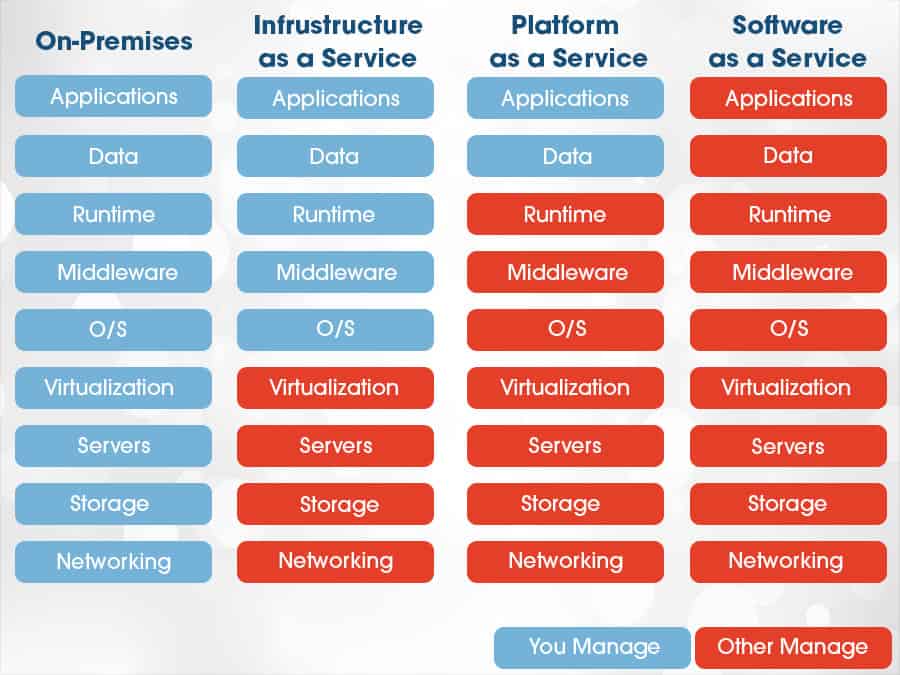Universal Cloud Service: Versatile and Scalable Solutions for every single Sector
Universal Cloud Service: Versatile and Scalable Solutions for every single Sector
Blog Article
Achieve Seamless Scalability With Cloud Services
In the ever-evolving landscape of cloud solutions, achieving seamless scalability stands as a keystone for modern services seeking to stay affordable and versatile. The quest for seamless scalability with cloud solutions introduces a world of possibilities for those eager to embrace the transformative power of dynamic resource monitoring.
Advantages of Cloud Scalability
Cloud scalability provides companies the adaptability to dynamically readjust resources based on demand, making certain optimal performance and expense effectiveness. One vital advantage is the ability to scale resources up or down swiftly in response to varying workloads. This dexterity makes it possible for businesses to fulfill changing customer needs without over-provisioning resources, eventually resulting in cost financial savings. Scalability additionally enhances performance by making certain that systems can take care of enhanced web traffic or workload without experiencing downtime or downturns. By effectively designating sources, companies can preserve high levels of performance during peak times without unneeded expenditures throughout quieter durations. Furthermore, cloud scalability promotes advancement and testing by enabling services to quickly evaluate originalities and range them as required. This adaptability urges a society of constant enhancement and adaptation, enabling companies to remain competitive in a rapidly advancing market landscape. Inevitably, the advantages of cloud scalability extend past expense savings to encompass better efficiency, agility, and technology.
Secret Attributes for Scaling
Effective scaling in cloud solutions counts on key functions that make it possible for organizations to readjust resources dynamically based upon demand. One essential attribute for scaling is elasticity, enabling sources to scale up or down in reaction to rising and fall workloads. This makes sure that companies can satisfy efficiency demands without over-provisioning sources. Another crucial attribute is scalability, allowing systems to take care of enhanced work by including sources perfectly. This attribute is crucial for fitting development without compromising performance. Furthermore, automation plays an essential role in scaling by automating the provisioning and de-provisioning of sources based upon predefined plans. Automation reduces human intervention, improves effectiveness, and makes certain rapid reaction to altering demands. Monitoring and analytics devices are also vital for scaling, offering understandings right into source application, performance metrics, and potential bottlenecks. These tools enable organizations to enhance and make educated choices source allowance for reliable scaling. On the whole, these crucial attributes jointly equip companies to accomplish seamless scalability in cloud services.
Implementing Auto-Scaling Strategies
To properly enhance resource appropriation and adjust to varying work, organizations should strategically carry out auto-scaling methods in their cloud services facilities. Auto-scaling permits systems to instantly adjust the number of compute resources based on real-time need. There are different auto-scaling strategies that companies can utilize, such as anticipating scaling, which makes use of historic data to anticipate future source needs, and responsive scaling, which replies to existing try this out workload changes.

Best Practices for Scalability
For companies aiming to enhance their scalability in cloud services, implementing ideal methods is crucial for optimum performance and source management. One key best technique is making applications with a microservices design. This strategy breaks down applications into smaller, independent solutions that can be released, updated, and scaled individually, permitting for better adaptability and scalability.
An additional crucial method is using containerization innovation, such as Docker or Kubernetes. Containers allow the packaging of applications and their dependencies right into separated units, making it easier to scale elements individually and release them consistently throughout various settings.
Furthermore, applying automated implementation and framework as code (IaC) can simplify scalability initiatives (linkdaddy cloud services). Automation tools like Terraform or Ansible aid in provisioning and taking care of resources successfully, reducing manual errors and making it possible for rapid scalability
In addition, checking performance metrics, establishing alerts, and carrying out normal capability planning are essential techniques to ensure positive scalability monitoring. By sticking to these best practices, companies can achieve smooth scalability in their cloud solutions while maximizing performance and resource application.
Surveillance Performance Metrics
When evaluating the performance of cloud services scalability, closely checking efficiency metrics is critical for guaranteeing ideal performance and resource allowance. By continuously tracking vital efficiency signs (KPIs) such as feedback times, latency, throughput, and source application, organizations can acquire beneficial insights right into the health and effectiveness of their cloud infrastructure. Monitoring efficiency metrics permits the very early detection of potential traffic jams or problems that might influence scalability, making it possible for positive steps to be taken to address them prior browse around these guys to they rise.

Conclusion
To conclude, attaining smooth scalability with cloud solutions is important for organizations to enhance performance, improve innovation, and maintain high performance levels during peak times. By leveraging the advantages of cloud scalability, implementing auto-scaling methods, making use of essential features such as flexibility and automation, and adhering to finest practices like application style and performance monitoring, businesses can successfully scale their systems while optimizing resource application and efficiency.
The quest for smooth scalability with cloud services introduces a world of possibilities for those prepared to welcome the transformative power of vibrant resource monitoring.
Cloud scalability provides companies the versatility to dynamically adjust sources based on need, guaranteeing optimum efficiency and price performance. One more vital attribute is scalability, enabling systems to manage raised work by adding resources perfectly.For companies intending to boost their scalability in cloud solutions, carrying out finest techniques is vital for ideal efficiency and source administration.When evaluating the efficiency of cloud solutions scalability, carefully monitoring efficiency metrics is imperative for making sure optimal functionality and source allowance.
Report this page